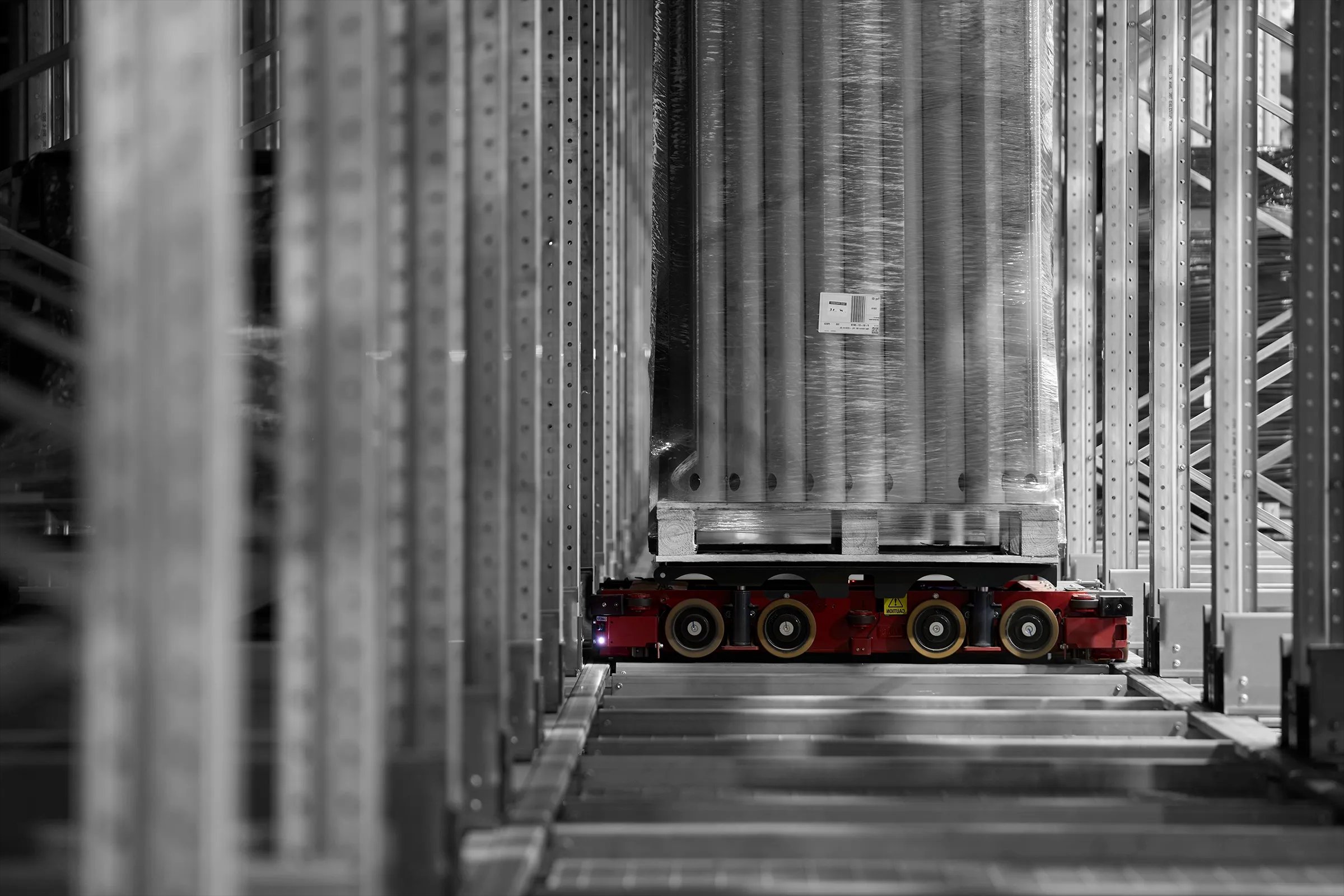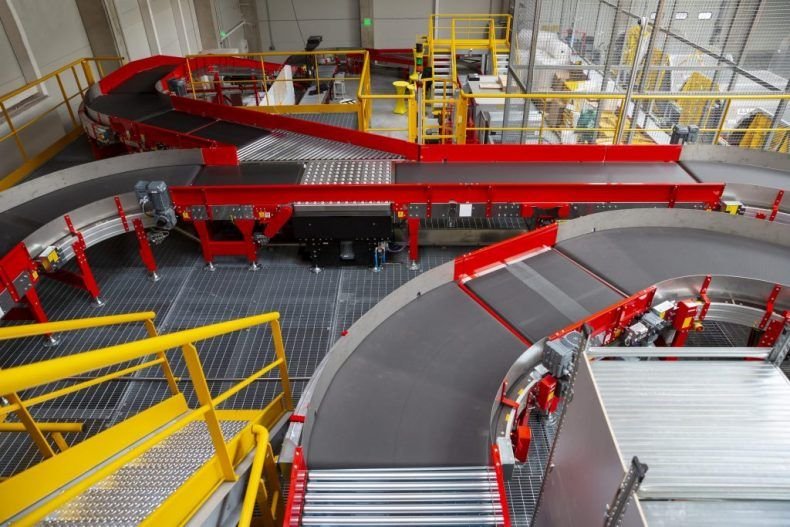HORIZONTAL CAROUSEL SYSTEMS
WHAT ARE HORIZONTAL CAROUSEL SYSTEMS
Horizontal Carousel Systems are automated storage solutions consisting of a series of bins or shelves that rotate along a track. These systems bring items directly to the operator, reducing travel and wait time. They are highly efficient for storing a variety of items and are often used in combination with pick-to-light or voice recognition technologies for enhanced picking accuracy.
IDEAL USE CASES AND EFFICIENCY ASPECTS
Horizontal Carousel Systems are ideal in environments where floor space is limited, as they make excellent use of horizontal space. They are commonly used in distribution centers, manufacturing facilities for parts storage, and in retail backrooms.
These systems are known for their efficiency in high-speed picking and reduced labor costs, making them suitable for applications requiring frequent and rapid access to a diverse range of items. Their ability to handle dynamic storage solutions efficiently meets the needs of various distribution operations.
COMPARISON WITH VERTICAL CAROUSEL SYSTEMS
Compared to Vertical Carousel Systems, Horizontal Carousels offer a more extensive horizontal storage capacity, making them suitable for environments with more floor space. They typically provide faster retrieval times due to their layout but may require more floor space than vertical systems.
VERTICAL CAROUSEL SYSTEMS
BASICS OF VERTICAL CAROUSEL SYSTEMS
Vertical Carousel Systems are automated storage solutions that utilise vertical space, operating similarly to a Ferris wheel with bins or carriers that rotate to bring items to the operator. They are designed to save floor space while providing high-density storage.
OPTIMAL APPLICATIONS AND PERFORMANCE FEATURES
These systems are particularly beneficial in environments where floor space is at a premium, such as small warehouses, parts departments, and retail environments.
Vertical Carousels are ideal for storing a wide range of items, from small parts to bulky goods, and are often used in industries like automotive, pharmaceuticals, and electronics.
ADVANTAGES OVER HORIZONTAL SYSTEMS
The key advantage of Vertical Carousel Systems over Horizontal Carousels is their ability to save significant floor space by utilising vertical space. They also tend to be more ergonomically friendly, as they deliver items at a comfortable height for the operator, reducing physical strain.
ROBOTIC ASRS
WHAT ARE ROBOTIC ASRS SYSTEMS
Robotic ASRS systems utilise mobile robots alongside static racking to create a fast-paced and dynamic ASRS. They typically store totes, trays, and cartons in high-density storage configurations, with single items picked at high-speed picking stations. The use of smart robots and shuttle technology enhances the efficiency of these systems.
While reserved usually for high throughput picking applications, Robotic ASRS systems can also be used for high-density storage and sortation. They are designed to handle various throughput ranges effectively.
USE CASES AND MARKETS
Robotic ASRS systems are utilised well in e-commerce environments, where order volumes are large but are typically made up of a low number of items per order. This makes them an efficient solution for e-commerce and omnichannel fulfillment.
Other uses include spare parts storage due to the high-density storage, and retail replenishment where there are a high number of SKUs to be picked.
BENEFITS AND LIMITATIONS
BENEFITS:
•System Performance: Robotic ASRS systems offer the best performance on the market and are the primary technology for high-speed picking systems.
•Storage Density: These systems excel in maximising vertical storage space, making them ideal for environments where floor space is at a premium.
•Versatility: With use cases in order fulfillment, consolidation, and parts storage, Robotic ASRS Systems have the flexibility to be utilised in different environments.
•Improved Accuracy: The picking process for Robotic ASRS Systems uses a Goods-to-Person concept, meaning the picking accuracy for orders can typically be 100%. The storage concept also allows for full inventory visibility, limiting out-of-stock order cancellations.
LIMITATIONS:
•Load Types: Robotic ASRS Systems typically will be limited to handling totes or trays of products with certain sizes. This means that larger goods cannot be stored.
•Investment: Investment levels can be high and although the Return on Investment (ROI) can be attractive, it is worth considering available capital for a project.
CONSIDERATIONS FOR CHOOSING AN ASRS
When choosing an Automated Storage and Retrieval System (ASRS) for your business, several key factors must be considered to ensure that you choose the right system that aligns with your operational needs and objectives.
FACTORS INFLUENCING ASRS SELECTION (SPACE, BUDGET, TYPE OF GOODS)
•Space: The available space in your warehouse is a critical factor. Different ASRS types have varying space requirements. For instance, Vertical Lift Modules (VLMs) are ideal for limited floor space, while Horizontal Carousel Systems might be more suitable for facilities with more floor area.
•Budget: The budget for your ASRS project is another crucial consideration. The cost varies widely depending on the type of system, its size, and the level of customisation needed. Balancing your budget with your operational needs is key to making a wise investment.
•Type of Goods: The nature of the items being stored – their size, weight, and handling requirements – will significantly influence the type of ASRS you choose. Robotic ASRS and Mini-Load systems are perfect for small items, while Unit-Load systems are designed for larger, heavier goods.
IMPORTANCE OF SCALABILITY AND FLEXIBILITY
Scalability and flexibility are essential features of a modern ASRS. Your chosen system should not only meet your current needs but also be able to grow and adapt with your business. This means considering systems that can be easily expanded or reconfigured as your storage requirements evolve. Flexibility in handling a variety of item types and adapting to changing inventory profiles is also crucial.
INTEGRATION WITH EXISTING WAREHOUSE MANAGEMENT SYSTEMS
Integration capabilities with existing Warehouse Management Systems (WMS) are paramount. A seamless integration ensures efficient operations, real-time inventory tracking, and better decision-making. The chosen ASRS should complement and enhance your current technological ecosystem, not complicate it. Compatibility with existing software and the ability to adapt to future technological advancements will contribute significantly to long-term operational success.
When choosing an ASRS, it’s important to consider how the system fits within your current operational framework and future growth plans. Balancing space, budget, and type of goods with scalability, flexibility, and integration capabilities will lead to a more successful and efficient warehousing solution.
FINAL THOUGHTS
As we have explored the various types of Automated Storage and Retrieval Systems (ASRS), it’s clear that these technologies are pivotal in shaping the future of warehousing and logistics. At L-A-C Logistics Automation, we are committed to being at the forefront of this evolution, offering a comprehensive range of ASRS solutions tailored to meet the diverse needs of modern businesses.
We encourage businesses to embrace these technological advancements. Implementing an ASRS solution from L-A-C Logistics Automation can significantly enhance your operational efficiency and productivity.
These systems not only optimise storage and retrieval processes but also contribute to safer, more organised, and cost-effective warehouse operations. They ensure efficient fulfillment operations and provide a competitive edge in meeting customer demands.
By partnering with L-A-C Logistics Automation, you are choosing a path of innovation and long-term success in the rapidly evolving landscape of warehousing and logistics.
Embrace the future with L-A-C Logistics Automation – your partner in cutting-edge ASRS and logistics automation solutions.






